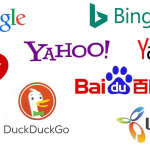Human beings have fretted over the possible ways new technologies might affect us as long as we’ve had the means to record our worries and anxieties for posterity. In 370 BC, in the dialogue Phaedrus, Plato’s Socrates spoke at length about the perils of a new fad that would “introduce forgetfulness into the souls of those who learn it.” He warned his audience that users of this drug — for Socrates calls it a pharmakon in Greek — will “not practice using their memories, because they will put their trust in it instead.”
So, what was this nascent form of premodern TikTok with the power to destroy people’s memories outright? It was the art of writing itself. The notion that — for the first time — we could put knowledge somewhere besides our own minds. In a thing. On a shelf.
While Socrates’ hot take on the downsides of literacy likely seem freakishly exaggerated to us now, we’ve certainly not ceased to worry that for every bell and whistle we add to world around us to better serve our needs and wants, we might lose something of ourselves in the process. Researchers at UC Irvine have been conducting a continuous study in trends in the human attention span since 2004. And so far, the observed trend has been singular and pointing in one direction only.
20 years ago, the average human attention span — measured by the amount time spent on a task before switching to another — was two and a half minutes. By 2012, it had diminished to 75 seconds. And in 2024, most of us go looking for distraction after a mere 47 seconds — about 10 seconds longer than it took you to reach the end of this paragraph, if you read at an average pace.
Yeah, So Get to the Point and Tell Me How Long My Stuff Should Be Already
Given that we’re all thoroughly “distracted from distraction by distraction” — a criticism of our minds’ aimless wanderings penned 71 years before the release of the first iPhone — what’s the magic number of words for effectively communicating content without losing the audience? If our attention spans are only getting shorter, should content length simply follow suit?
Not exactly.
After all, most of us want our readers to do more than just endure our content till the end. We’d like them to share it, cite it, or even go and make a decision in the real world based on something they learned from it. And speaking to that part of ourselves — our action-driving values lurking just below the surface of our fleeting attention — requires a little more than just giving our first and worst impulses what they want all the time.
Stirring people into action or to convince them of a new idea — be it the moral necessity of a grand cause or the superiority of a particular sneaker — seems to take a bit longer. Based on the average word count of first-page content on Google in March 2024, you need about five and a half minutes of your reader’s more-or-less undivided attention — or roughly 1400 words at the average adult reading pace — to get the keys clacking and the thumbs tapping out those precious conversion actions.
What Does Everyone Else Say?
Of course, there’s more to the world of content performance metrics than just Google Analytics. Afterall, averages can be deceiving without context. For example, both Bill Gates and Jeff Bezos have homes in the 3000-resident township of Medina, WA. Nevertheless, locals should probably not expect their creditworthiness to skyrocket based on the town’s average net worth per resident alone. Similarly, figuring out optimal content length requires a bit more information.
Let’s look at what the other hierophants of content marketing have to say.
-
BuzzSumo
Publishing platform specialists BuzzSumo recently conducted a study of 400,000 long-form blogs and articles to identify the hallmarks of high-performing content. They found that length does positively correlate with performance within a specific range, such that pieces shorter than 1000 words suffered a 1% reduced chance of high engagement with diminishing returns… well returning… above 2000 words.

Image source BuzzSumo
-
Moz
SEO gurus Moz have mostly chosen to answer the question “How long should blogs be?” with a set of questions you should ask yourself about your own audience and goals first.
- In large datasets used to calculate averages, how many of the studied posts target the same keywords as your content?
- How do you tell correlation from causation? Afterall, the top result for any search query didn’t achieve that position based on having a magic word count. It simply communicated something better than the available alternatives.
- What’s the quality of traffic the highest performers receive? If the quality is low, is it worth imitating?
- Semrush
Semrush’s most recent State of Content Marketing Global Report found that blog posts with over 3,000 words receive 138% more page views than those with fewer than 500 words. They concluded this is largely because longer articles tend to be more comprehensive and detailed, qualities that surprisingly appeal to both search engines and their putative human masters. Nonetheless, relevance and quality still trump length outright, as unnecessarily long posts will inevitably lose reader engagement.
To determine the best length for your specific needs, Semrush recommends:
- Establishing Clear Goals: Define whether your aim is to rank high on search engines, drive social media shares, generate leads, or promote a product.
- Understanding Your Audience: Tailor the content length to your readers’ preferences and their level of expertise on the topic.
- Focusing on Search Intent: Analyze the top-ranking articles for your target keywords to gauge the appropriate length and structure.
- Backlinko
Backlinko has published some mold-breaking content on the subject of content length. Their analysis of 912 million blog posts found that comprehensive and detailed articles are more likely to receive backlinks and social media shares.
In another noticeably 41,130-word post entitled How to Write a Blog Post: The Definitive Guide — a kind of ultimate guide to ultimate guides — Backlinko says longer blog posts often rank higher on search engines and are more likely to be shared on social media platforms. And the difference is value, which attracts more readers and encourages them to share the information with others. Specifically, expanded list posts and ultimate guides that take the time to deeply explore topics and provide extensive information have enjoyed the most success.
-
Ahrefs
According to recent insights from Ahrefs, the ideal blog post length generally ranges from 1500 to 2000 words. Their analysis indicates longer content tends to attract more organic traffic and backlinks — the stuff you presumably want — than lower quality traffic. However, Ahrefs also notes a diminishing return on engagement for posts exceeding 2000 words. In other words, you probably can’t compete with the highest performers without longer content, but length alone won’t get you there.
The key takeaway from Ahrefs is to focus on creating thorough, high-quality content that comprehensively covers the topic without unnecessary fluff. Fluff is, of course, audience relative. If I were trying to sell you hot wings or modify your opinion of a large fracking operation, my opening bon mots about Socrates would have almost certainly sent you elsewhere. But in a post about writing, whatever got you here in the first place probably came with an expanded sense of relevance.
-
Hubspot
According to recent data from HubSpot, the ideal blog post length for SEO and user engagement is between 2100 and 2400 words. HubSpot’s analysis shows that longer, in-depth blog posts tend to attract more organic traffic. Again, this is presumably because comprehensive content covers more subtopics and provides detailed information that meets user intent effectively.
Additionally, HubSpot emphasizes the importance of creating scannable content.
Even for longer posts.
Breaking down the content into smaller, digestible sections.
With clear:
- Subheadings
- Bullet points
To better maintain reader engagement.
This approach ensures content remains accessible and appealing, even if it would raise the blood pressure of your favorite college English professor.
So Now What?
Well, now that you’re caught up on what the experts have said recently, we should probably discuss how things are going to change.
A lot.
And soon.
If you haven’t spent the last two years sequestered in private meditation, you’re probably aware that major breakthroughs in artificial intelligence are about to snowball. As good as ChatGPT is at crafting topical limericks or summarizing your boss’ verbose emails, the technology driving it is about to get plugged into search engines in some fundamentally game-changing ways.
Now that anyone can crank out blogs at a pace of dozens per minute with generative AI tools, finding ways to surface meaningful, useful content in search engines has become more important than ever, both for search engine users and developers.
Answer Engine Optimization (AEO)
On the user side of things, this new urgency has brought us answer engine optimization (AEO), a tactic for publishers to optimize content specifically for answer engines like Google Assistant, Siri, or Amazon Alexa.
The goal of AEO is to create content that answers specific user queries directly and concisely. It involves structuring content in a Q&A format, using clear and straightforward language, and targeting long-tail keywords to match conversational search queries. AEO tries to deliver content that is easily digestible for AI-driven voice search tools and that can be cited accurately in voice search responses. Whether formatting will eventually get the edge on length as a performance indicator remains to be seen.
Search Generative Experience (SGE)
On the development side, things are about to get even wilder. Google’s recently announced search generative experience (SGE) is an advanced AI-driven feature designed to enhance traditional search results. SGE synthesizes information from various sources — meaning not just yours — to generate comprehensive and contextually relevant answers directly within the search interface. Great for the user, perhaps less for the publisher.
Unlike AEO, which optimizes for specific queries, SGE aims to provide a broader understanding of user intent by leveraging machine learning to interpret complex queries and generate detailed, authoritative responses. While much remains unclear about how this will all work in practice, the consensus seems to be that content optimized for SGE should be structured to be easily parsed by AI algorithms
So, You Got Any of Those Best Practices We Love to Skip Ahead to?
That probably depends on whether you prefer short, wrong answers or long, less wrong answers. Anyone peddling the ‘right’ answer is almost certainly having another kind of conversation altogether.
Ideal blog post length will probably remain somewhere in the range of 1000-2000 words, for the foreseeable future. But the foreseeable part of the future has contracted a lot in the last few years, so hang on to your skepticism.
What Seems to Be the Case:
- Longer content tends to attract more organic traffic, backlinks, and social shares.
- Posts exceeding 2000 words experience diminishing returns.
- Quality — as defined by user-intent — trumps length, format, and pretty much everything else.
- Technology is going to radically change a lot of things soon but probably not that last point.
So, if high-quality writing is going to continue to win out at the end of the day — even in a time when we reverse-Turing test ourselves to prove to each other we’re still human — we’re probably going to need to keep around a few of those pesky, undeniably-human writers. We know a few and they’re eager to meet you
The post How Long Should a Blog Post Be, Really? appeared first on Express Writers.













